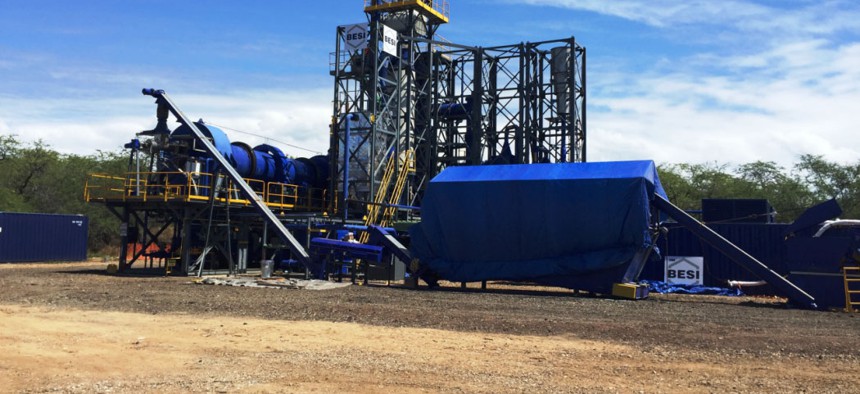AFRL project powers up on base's trash
The waste-to-energy demonstration is turning up to 10 tons of trash a day into 300 megawatts of electric power.
The military has long been a leader when it comes to using alternative energy sources, whether with large solar arrays, wind farms or backpacks that generate power through motion. The Air Force is digging in on another promising power source, turning waste into energy on a fairly large scale.
The Air Force Research Laboratory currently is demonstrating a waste-to-energy system at Joint Base Pearl Harbor-Hickam, Hawaii, that turns up to 10 tons a trash a day into 300 kilowatts of continuous power, enough to handle about 100 U.S. homes, AFRL said.
The lab’s Advanced Power Technology Office undertook the $6.8 million demonstration, which is set to run into the summer, to test the technology in an operational environment in order to determine its best uses, such as a way to ensure power when other sources are unavailable. Sponsored by the Hawaii Center for Advanced Transportation Technologies, it’s part of a larger effort to demonstrate technologies that would allow military installations to operate off the power grid in case of a power outage, cyberattack or other disruptive event.
"From an Air Force perspective, mission assurance is paramount," Lt. Col. Scott Fitzner, chief of AFRL's Acquisition Systems Support Branch, which leads the Advanced Power Technology Office, said in a release. "If a technology can provide mission assurance through energy assurance, it can then be considered for more widespread implementation."
The facility uses a gasification process developed by Biomass Energy Systems Inc. to convert waste products such as wood, plastics, biomass and other materials into synthesis gas, or syngas, which can then be used to produce electricity, AFRL said.
Waste-to-energy projects in the military aren’t quite new. The Army, for example, is working on developing a prototype plant for the Pacific Command, and in 2008 developed a prototype deployable machine for converting field waste into energy.
AFRL’s project could help move the ball forward, potentially offering efficient energy production that can deliver other benefits. For one thing, waste-to-energy means less trash in landfills or burn pits, which would reduce greenhouse gas emissions, AFRL said.
It also could help in the military’s effort to increase its use of alternative energy. The Defense Department has set a goal of using renewable resources for at least 25 percent of its energy by 2025 and the services have initiated a number of alt-energy efforts, such as the Army’s Net-Zero project, which to date has used solar, wind and more efficient heating, cooling and water systems to cut down the carbon footprint at installations.
After the demonstration wraps up in the summer, AFRL expects the syngas process to be put into the first phase of the joint base’s microgrid project. Down the road, project leaders also could apply the technology to produce fuel for vehicles and ground support equipment, AFRL said.




